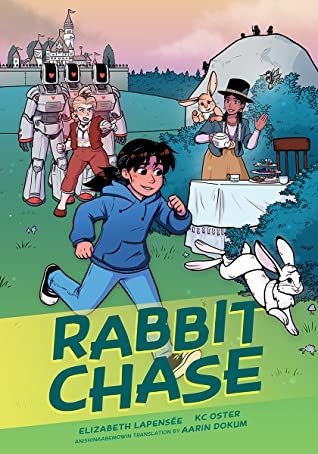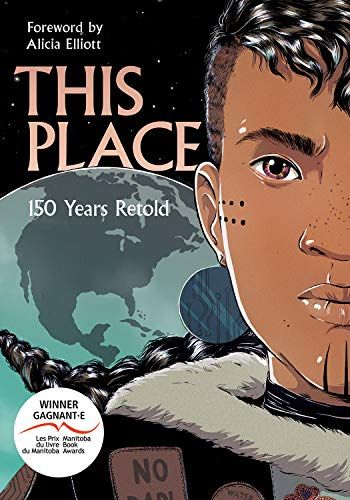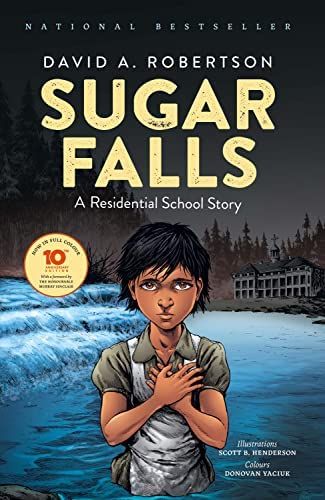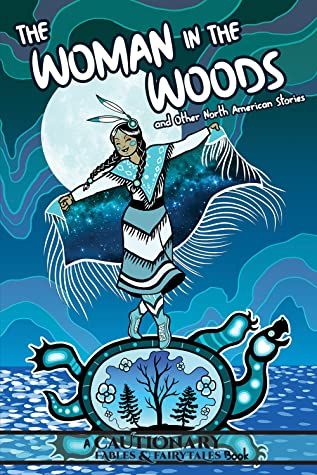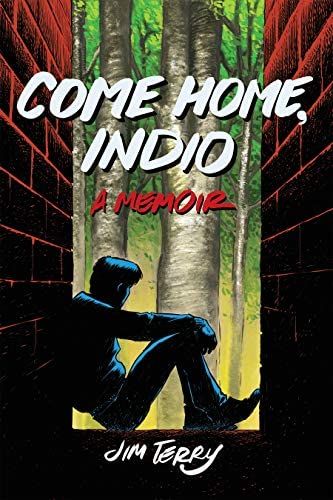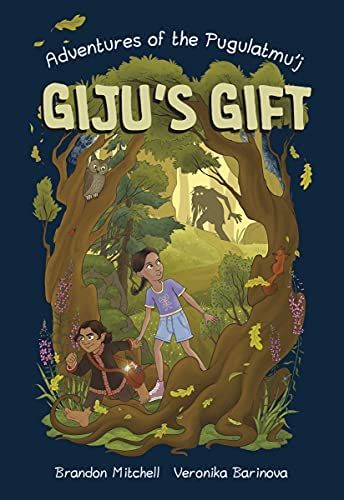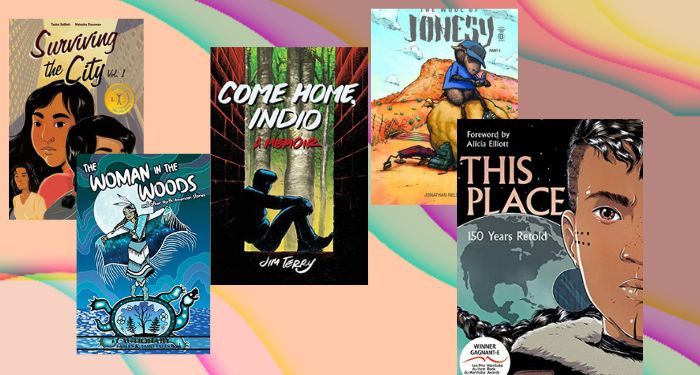
The world of comic books and graphic novels has long been….shall we say, less than diverse. Not just with characters, but also with writers and artists. But that’s been changing in a lot of ways, and if you’re looking for new comics/graphic novels to explore, Indigenous graphic novels are a great place to start.
What I love about graphic novels and comics is that the medium can help with even the most reluctant readers. Making visual a complicated point or a tough history can really add to the power of a story, and it can also make it a great way to introduce tough topics to students. Don’t get me wrong: in no way does it dilute the story or simplify it. Instead, illustrations can work with the text to convey things in a more concrete way that is a great conversation starter. Even for adults and those who love to read, beautiful and powerful illustration just adds another rich layer to a text.
Indigenous voices have long been left out of the cultural conversation, or silenced. Every book on this list is written and/or illustrated by Indigenous creators, and they are set in either the U.S. or in Canada. This is in no way a comprehensive list, just a starting point. If you’re looking for even more Indigenous graphic novels and books, I’d encourage you to check out Birchbark Books & Native Arts, and Red Planet Books and Comics.
Rabbit Chase by Elizabeth LaPensée, KC Oster, and Aarin Dokum
Aimée is a nonbinary Anishinaabe middle schooler who goes on a class trip with their school. The point of the trip is to offer gifts to the water spirits that protect the land, known as Paayehnsag. While the teachers tell the students about the problems with land development and more information about the water spirits, Aimée’s in their own head, partly to escape the bullying from their classmates. But then they accidentally wander off and find themselves in an alternate dimension that not only has traditional Anishinaabe figures, but is also inspired by Alice in Wonderland. This is a gorgeously written and illustrated graphic novel about figuring out who you are, history, identity, and community.
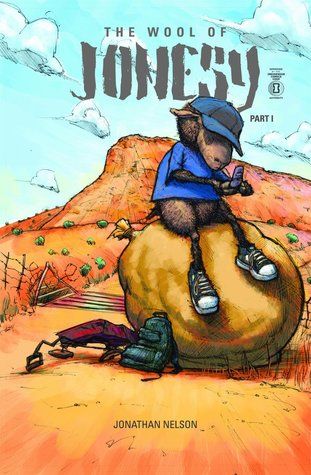
The Wool of Jonesy: Part 1 by Jonathan Nelson
Diné artist Nelson has created a unique story that both kids and adults will enjoy. This slim graphic novel follows Jonesy the Sheep, and all of his adventures that he gets into on the reservation. He’s just finished high school, and he’s not quite sure what he wants to do. Over the course of the day, he finds himself in various situations. This is a wordless comic, which is really great for kids to create their own stories and narrative about what’s going on for the character.
Canada Promotions Newsletter
Sign up to receive special offers, new products, and interesting bookish stuff, just for Canadian readers!
Thank you for signing up! Keep an eye on your inbox.
By signing up you agree to our terms of use 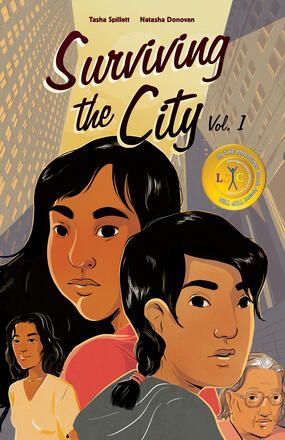
Surviving the City, Volume 1 by Tasha Spillett, Natasha Donovan, and Donovan Yaciuk
Miikwan and Dez — who are Anishinaabe and Inninew, respectively — are best friends. They live with Dez’s grandmother, since Miikwan’s mother is missing. Set in urban Canada, this story follows them as they figure out where to go next. It’s a beautifully illustrated story that touches on the history of the maltreatment of Indigenous people in Canada (especially women), as well as the present challenges they face — but also about community and hope and survival.
This Place: 150 Years Retold by various authors
This extensive graphic anthology explores 150 years of Canadian history from Indigenous perspectives through stories. Each piece is accompanied by a timeline, which helps give context for the reader as to what was actually happening in history when the story takes place. There are stories of genocide, colonialism, criminalization of Indigenous traditions, and much more, along with magical realism and dystopian elements.
Sugar Falls: A Residential School Story by David A. Robertson, Scott B. Henderson, & Donovan Yaciuk
This graphic novel is based on the true story of Betty Ross, an Elder from the Cross Lake First Nation. After being abandoned as an infant, she’s adopted into a loving family, but at the age of eight, is taken away and sent to a residential school. Throughout her experience, she holds onto things her father told her to fuel her desire to survive. This short graphic novel is a great way to teach middle school children about the history of residential schools.
The Woman in the Woods and Other North American Stories edited by Kate Ashwin, Kel McDonald, and Alina Pete
This is the fifth volume of the Cautionary Fables and Fairytales series, and the stories are updated retellings of ancient folklore stories from First Nations around the continent, including Chickasaw, Odawa, Navajo, and Cree, to name a few. With monochromatic art and lots of modern and culturally specific details, the stories provide a really enjoyable treat for the reader. This would be a great introduction to Indigenous lore for middle-grade readers — or anyone, for that matter!
Come Home, Indio: A Memoir by Jim Terry
Terry has created a graphic memoir about his childhood and trying to find his place between the Ho-Chunk community of his family in Wisconsin and his classmates in Chicago. He never quite manages to fit in anywhere, and eventually he turns to alcohol because of the isolation he faces. But Terry also writes about finding help and hope, as well as his journey to sobriety and how he found his place at Standing Rock.
Giju’s Gift (Adventures of the Pugulatmu’j), Volume 1 by Brandon Mitchell and Veronika Barinova
When Mali loses her hair clip that her giju’ made for her, she’s distraught. Her mom thinks she merely lost it, but Mali knows that the pugulatmu’j took it. The pugulatmu’j, or the Little People, were the original guardians of the land, and as we forgot about them over time, they began to play tricks on us…like swiping hair clips. But when Mali’s suspicions turn out to be right, she realizes she has to help Puug to get her beloved clip back. She goes on adventure and learns more than she ever expected to.
Which one will you read first? If you’re looking for even more Indigenous books, check out this post on Indigenous poets you should know, and this post about Indigenous memoirs.


